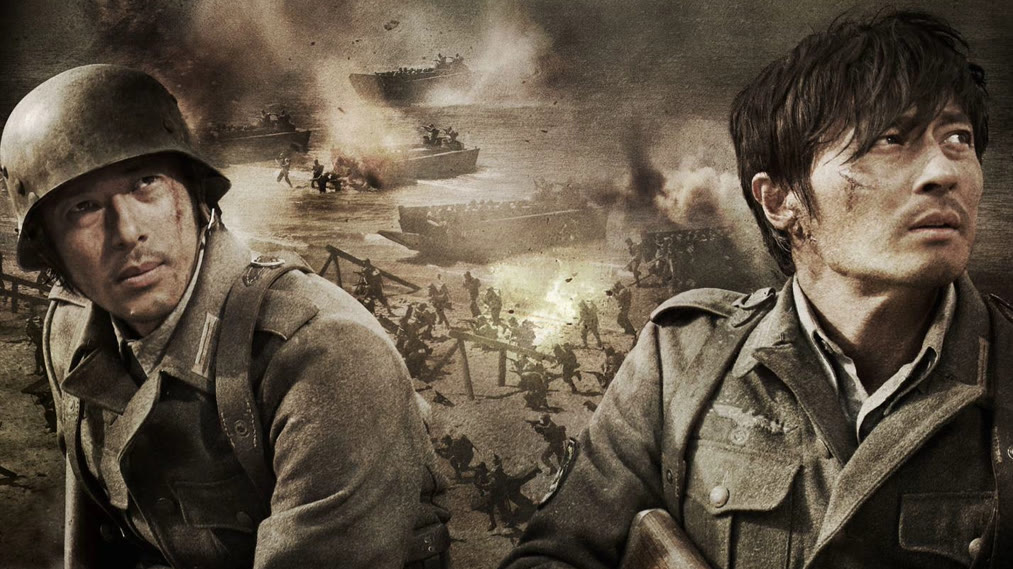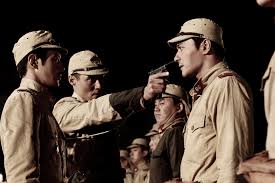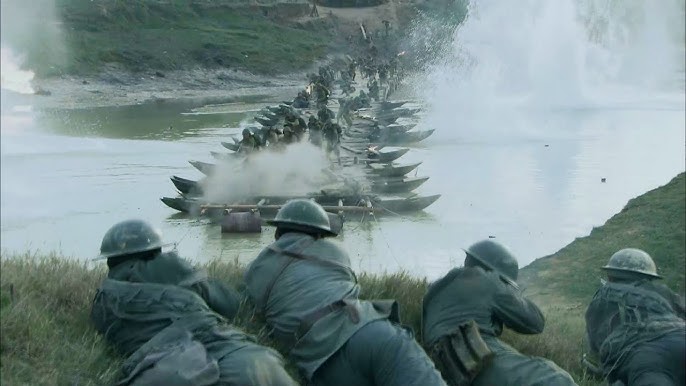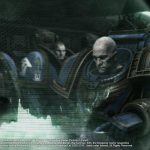🎬 My Way (2011)

My Way (2011) Movie Review: A Gripping Tale of Survival and Brotherhood During WWII
Introduction: A War Epic of Courage, Resilience, and Humanity
My Way (2011), directed by Kang Je-gyu, is a South Korean war film that brings to life the harrowing experiences of two soldiers—one Korean and one Japanese—who are forced to fight together during World War II. Set against the backdrop of key battles during the war, the film explores themes of survival, camaraderie, and the unbreakable spirit of humanity in the face of unimaginable adversity.
Starring Jang Dong-gun, Joe Odagiri, and Fan Bingbing, My Way offers a unique perspective on the personal struggles and relationships formed during the chaos of war. The film not only provides thrilling battle sequences but also delves deep into the emotional and psychological toll of war on the individuals involved. With its strong performances, impressive action sequences, and poignant storytelling, My Way stands as a powerful testament to the resilience of the human spirit.
In this review, we’ll explore the plot, performances, cinematography, historical context, and key themes that make My Way a memorable and compelling war film.
Plot Summary: The Journey of Survival and the Power of Brotherhood
My Way follows the story of two men—Kim Jun-shik (played by Jang Dong-gun), a Korean man forced into military service by the Japanese Army, and Tatsuo (Joe Odagiri), a Japanese soldier—whose fates are intertwined as they are thrown into the brutality of World War II. The film spans several years and a wide range of historical events, from the Korean occupation by Japan to the battles fought across the Pacific, ultimately culminating in the brutal Battle of Normandy.
The film begins with Kim Jun-shik, a talented Korean runner, who is coerced into joining the Japanese army as part of Korea’s occupation by Japan. Alongside him is Tatsuo, a Japanese soldier who is initially antagonistic toward Kim but soon forms a bond with him under the harsh conditions of war. As the war progresses, the two men find themselves not only fighting for survival but also facing the emotional and physical challenges that come with the horrors of war.
The film’s central conflict revolves around the dynamic between Kim and Tatsuo, who, despite being on opposite sides of the conflict, form a deep, brotherly connection through shared hardship and mutual respect. The two are thrust into key battles, including the Battle of Normandy and the Pacific Theater, where they must rely on each other to survive.
Through the course of the film, Kim and Tatsuo are captured by different forces and find themselves in the midst of some of the most brutal and pivotal moments of the war. Their journey takes them from the battlefields of Europe to the frozen wilderness of Siberia, all while testing the limits of their endurance, loyalty, and the bond they’ve formed despite the overarching enmity between their nations. My Way not only showcases the scale of the war but also highlights the deeply personal, human experiences that often go unnoticed in the broader context of conflict.
The Performances: Jang Dong-gun and Joe Odagiri Shine as the Leads
One of the film’s greatest strengths is its performances, particularly those of Jang Dong-gun and Joe Odagiri. Jang Dong-gun, a renowned South Korean actor known for his roles in films like The Warrior’s Way (2010) and The Promise (2005), brings emotional depth and complexity to his portrayal of Kim Jun-shik. As a man forced into the Japanese army against his will, Kim’s journey from a reluctant soldier to a battle-hardened survivor is both compelling and heartbreaking. Jang’s ability to convey the internal struggles of his character, from his resistance to his eventual acceptance of his situation, adds significant emotional weight to the film.
Joe Odagiri, a Japanese actor best known for his work in films such as The Robber (2010) and The Great Passage (2013), plays Tatsuo, the Japanese soldier who forms an unlikely friendship with Kim. Odagiri brings a nuanced performance to his role, portraying Tatsuo as a man torn between loyalty to his country and his growing respect for Kim. The evolution of their relationship, from rivalry to camaraderie, is one of the most powerful aspects of the film, and Odagiri’s performance is key to making that dynamic believable and emotionally resonant.
The chemistry between Jang and Odagiri is palpable, and the film’s success lies in their ability to portray the bond between Kim and Tatsuo in a way that transcends nationalities and focuses on the shared humanity of both characters. Their performances make the war not just a backdrop for action sequences but a personal story of survival, friendship, and the human capacity for resilience.
The supporting cast also delivers strong performances, particularly Fan Bingbing as the character of Xia, who plays a pivotal role in the later part of the film. Though her role is somewhat limited, Fan’s portrayal of Xia provides a unique perspective on the war, and her character adds an emotional dimension to the film’s exploration of sacrifice and love.
Cinematography and Visuals: A Stunning Depiction of War’s Brutality
The cinematography in My Way is a standout element, with director Kang Je-gyu and cinematographer Kim Byeong-seo effectively using the camera to immerse the audience in the chaos of war while also capturing the emotional depth of the characters’ experiences. The film’s visual style is both sweeping and intimate, with large-scale battle scenes contrasting with smaller, more personal moments of reflection.
The action sequences in My Way are intense and realistic, with carefully choreographed combat scenes that highlight the brutality of war. The battle sequences, particularly those set in the European theater, are immersive, capturing the vastness and chaos of the battlefield. The camera work during these scenes is dynamic, with tight close-ups and wide-angle shots that give a sense of both personal struggle and the larger scope of the conflict.
The film also makes effective use of lighting and color to create different emotional atmospheres. The desolate, snow-covered landscapes of Siberia, where Kim and Tatsuo are held captive, are shot with muted tones, emphasizing the harshness of their surroundings. In contrast, the warmer, more vibrant scenes of battle in Europe highlight the chaos and violence of war. The film’s cinematography, combined with the powerful sound design and score, creates an immersive and emotionally impactful viewing experience.
Historical Context: A Fictionalized Account of WWII Through a Korean Lens
My Way is a historical war film, but it takes significant creative liberties in terms of the plot and characters. While it is set during the key moments of World War II, including the Battle of Normandy and the Pacific War, many of the events depicted in the film are fictionalized for dramatic effect. The characters of Kim Jun-shik and Tatsuo are not based on real individuals but represent the experiences of many soldiers from both Korea and Japan who were caught up in the war.
One of the unique aspects of My Way is its perspective on World War II from a Korean point of view. The film examines the experiences of Korean soldiers who were forced into the Japanese military during the occupation of Korea, providing a perspective that is often overlooked in mainstream WWII films. This aspect of the film adds a layer of complexity to the narrative, as it explores the identity and struggles of those who fought on both sides of the conflict.
While the film does take creative liberties, it remains grounded in the realities of war, depicting the brutal conditions soldiers faced during the conflict. The film’s portrayal of the human cost of war, from the physical injuries to the emotional toll of loss and survival, is both heartbreaking and realistic.
Themes: Survival, Brotherhood, and the Impact of War
At its heart, My Way is a film about survival, brotherhood, and the unbreakable human spirit. The film explores the theme of survival not just in the context of physical endurance but also emotional resilience. The two central characters, Kim and Tatsuo, must navigate the hardships of war while also coming to terms with their personal fears, guilt, and the complex nature of loyalty and honor during wartime.
The theme of brotherhood is central to the film, as Kim and Tatsuo’s relationship evolves from initial hostility to mutual respect and friendship. Their bond becomes a symbol of the possibility for unity even in the midst of the most devastating conflict. The film emphasizes the idea that, despite nationalities and allegiances, shared experiences and mutual respect can create lasting connections between individuals.
Additionally, My Way explores the psychological and emotional toll of war, showing how the trauma of battle affects both the soldiers and the civilians caught in its wake. The film delves into the cost of war on an individual level, highlighting the deep psychological scars that warfare leaves on those who endure it.
Conclusion: A Powerful War Drama of Survival and Humanity
My Way (2011) is a captivating war film that blends thrilling battle sequences with a deeply emotional exploration of survival, brotherhood, and the impact of war on the human spirit. With stellar performances from Jang Dong-gun and Joe Odagiri, breathtaking cinematography, and a powerful story of resilience and sacrifice, My Way stands as a poignant and memorable entry in the war film genre.
The film’s unique perspective on World War II, its focus on the human side of conflict, and its exploration of the emotional and psychological toll of war make it an impactful viewing experience. For fans of historical dramas, war films, and stories of survival, My Way is a must-watch that will leave a lasting impression long after the credits roll.











